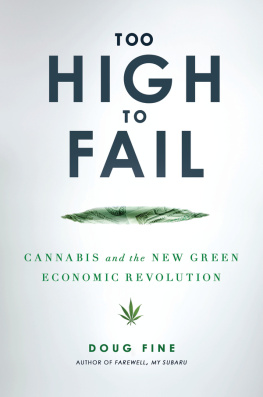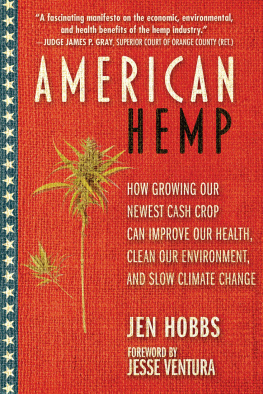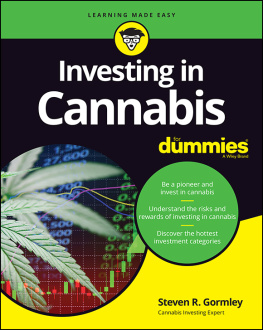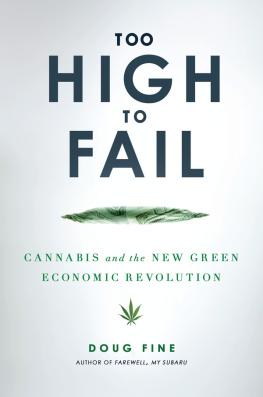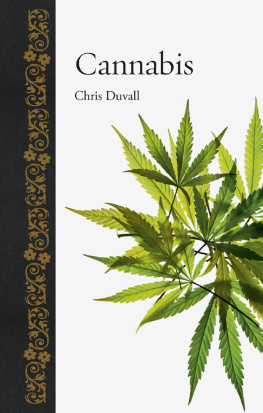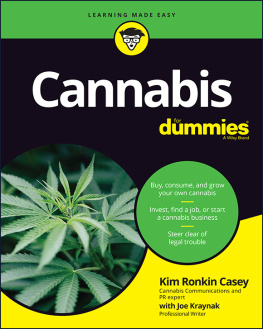Also by Doug Fine
Not Really an Alaskan Mountain Man
Farewell, My Subaru
TOO
HIGH
TO
FAIL
Cannabis and the New Green Economic Revolution
DOUG FINE
GOTHAM BOOKS
Published by Penguin Group (USA) Inc.
375 Hudson Street, New York, New York 10014, U.S.A.
Penguin Group (Canada), 90 Eglinton Avenue East, Suite 700, Toronto, Ontario M4P 2Y3, Canada (a division of Pearson Penguin Canada Inc.); Penguin Books Ltd, 80 Strand, London WC2R 0RL, England; Penguin Ireland, 25 St Stephens Green, Dublin 2, Ireland (a division of Penguin Books Ltd); Penguin Group (Australia), 250 Camberwell Road, Camberwell, Victoria 3124, Australia (a division of Pearson Australia Group Pty Ltd); Penguin Books India Pvt Ltd, 11 Community Centre, Panchsheel Park, New Delhi110 017, India; Penguin Group (NZ), 67 Apollo Drive, Rosedale, Auckland 0632, New Zealand (a division of Pearson New Zealand Ltd); Penguin Books (South Africa) (Pty) Ltd, 24 Sturdee Avenue, Rosebank, Johannesburg 2196, South Africa
Penguin Books Ltd, Registered Offices: 80 Strand, London WC2R 0RL, England
Published by Gotham Books, a member of Penguin Group (USA) Inc.
First printing, August 2012
Copyright 2012 by Doug Fine
All rights reserved. No part of this book may be reproduced, scanned, or distributed in any printed or electronic form without permission. Please do not participate in or encourage piracy of copyrighted materials in violation of the authors rights. Purchase only authorized editions.
Gotham Books and the skyscraper logo are trademarks of Penguin Group (USA) Inc.
Kurt Vonnegut quote from reprinted with permission from Dell Books.
Library of Congress Cataloging-in-Publication Data
Fine, Doug.
Too high to fail : cannabis and the new green economic revolution / Doug Fine.
p. cm.
ISBN 978-1-592-40709-5
1. MarijuanaEconomic aspects. 2. Marijuana industry. I. Title.
HD9019.M38F56 2012
338. 4'7362295dc23 2012014437
While the author has made every effort to provide accurate telephone numbers, Internet addresses, and other contact information at the time of publication, neither the publisher nor the author assumes any responsibility for errors, or for changes that occur after publication. Further, the publisher does not have any control over and does not assume any responsibility for author or third-party websites or their content.
To the people of Mendocino County, California.
Thanks to your openness and trust, this book is written from the inside. Some of you, in inviting me into your lives and farms, expressed a desire to avoid the drawing the federal bead phenomenon that still exists as of this books initial publication. Therefore, some names, dates, locations, and menu choices have been changed herein to protect privacy. Many more have not.
God said, See, I give you every seed-bearing plant that is upon all the Earth... they shall be yours for food.
Genesis, 1:29
It is vastly desireable to be getting under way with our domestic cultivation and manufacture of hemp, flax, cotton and wool.
Thomas Jefferson, July 4, 1790
Grow up. Its just a plant.
Henry Rollins
CONTENTS
AUTHORS NOTE
Hey, Bro, Its the Return of the Greek
We smoked and respected tight gage. That was our cute little name for marijuana.... We always looked at pot as a sort of medicine... with much better thoughts than one thats full of liquor.
Louis Armstrong, in Louis: The Louis Armstrong Story, by Max Jones and John Chilton, reviewed in the Summer 2010 issue of OShaughnessys: The Journal of Cannabis in Clinical Practice
A fter some delightful etymological time travel through the catalog of possible appellations, from the Tea of the 1930s jazz scene to the Chronic of 90s hip-hop, I decided to go botanical with the name I use for the actual plant discussed in this book. In the course of my year-long research, it became clear that the likely enduring term for the plant is cannabis, which is the genus name (neo-Latin, from the Greek) for both the psychoactive/medicinal marijuana plant and industrial/nutritional hemp. No other term seemed to cover the scope of this plant as broadly as the second decade of the millennium unfolds.
The two branches of psychoactive (delta-9-tetrahydrocannabinol- or THC-containing) cannabis are sativa (tropically descended, thin-leaved, taller-growing) and indica (originally from the mountains of Asia, thick-leafed and bushy). A third, nonpsychoactive branch of the plant family is called ruderalis. Today nearly all strains of medicinal/social cannabis are a blend of the first two, though genetics researchers are hard at work retracing lineages, often for the purposes of maximizing medicinal, nutritional, or industrial qualities found in particular strains. In the field, humans have been selectively breeding strains for at least five millennia, for clothing, housing, spiritual use, and food.
For all of these varieties and uses, cannabis appears to be working in a debate that has ramifications for everything from the U.S. national debt to soil health in sub-Saharan Africa. As of this writing, cannabis is being used as door material in Dodge Vipers and is one of the primary components in a British construction material companys Hemcrete: Carbon Negative Hemp Walls. One place cannabis is not yet found: the aboveground U.S. economy. Thats thanks to its listing as a Schedule I narcotic under the federal Controlled Substances Act (CSA).
The Schedule I listing is very important. By explicitly declaring that there are no legitimate uses for the cannabis plant, it prevents businesses like Hempcrete from developing Stateside. That means cannabiss status deprived U.S. treasury coffers of up to $6.2 billion in taxes in 2011, according to Harvard economics professor Jeffrey Miron. After legalization, Miron told CNBC, he sees the tax benefit at $46.7 billion annually, with $41.3 billion additionally pumped into the economy in saved enforcement and incarceration costs. So for dollar reasons alone, I figured that a dignified name was necessary.
I indeed had many choices. That is to say, we humans sure like to give nicknames to things were close to. In 1991, I snapped awake during an otherwise less-than-jolting college lecture on phonemes when my professor mentioned that linguists often use a cultures word for cannabis to determine when key language changes have occurred throughout history.
They found that the plant has been both vital to and nearly ubiquitous in human society for as far back as the historical record goes, Professor Lerer lectured. When I first heard that, at age twenty, I thought, Really? Kind bud? Huh. Its not just for river trips and Dead shows anymore. For unrelated reasons, I soon asked Professor Lerer to be my advisor.
Four years later (1995), a budding journalist wandering across Asia in search of a particularly elusive barking deer whichmy NGO contacts told mewas going to force the stalling of a questionable World Bank hydrodam project in rural Laos, I stumbled across an herb hanging between the turmeric and the dried pepper in a tent bazaar. It smelled, to use a phrase of Lisa Simpsons, like the art teachers office. I pointed.
Gansa, explained the woman tending the booth, miming a scooping-with-spoon motion. Tasty. In soups.

